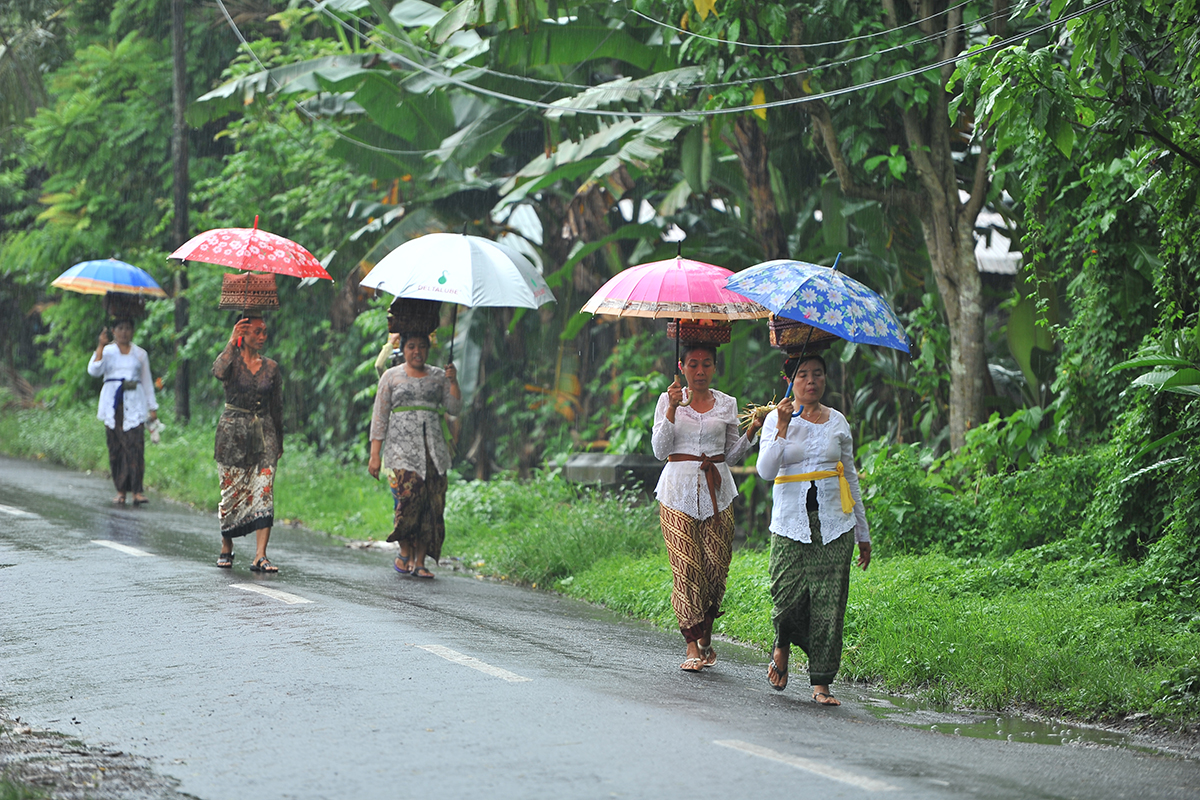Bali’s Wet Delight: Embrace the Rainy Season
Many travelers plan their Bali vacation during the dry season, but the island’s rainy season, from October to March, has its own allure. While daily downpours can soak your clothes and disrupt your itinerary, embracing Bali’s wet season can lead you to discover the island’s hidden charms. From lush waterfalls to verdant rice paddies, Bali’s rainy season is a must-visit for adventurous and nature-loving visitors.
Embrace Bali’s Wet Season: Discover the Island’s Hidden Charms

If you’re looking to escape the tourist crowds and immerse yourself in Bali’s natural beauty, the rainy season is the best time to go. The island’s rivers and waterfalls are at their fullest, creating a stunning display of cascading water that you won’t see during the dry season. Some of the must-visit waterfalls during the rainy season are Sekumpul Waterfall, Gitgit Waterfall, and Tegenungan Waterfall. Don’t forget to bring your rain jacket and waterproof shoes to fully enjoy the experience.
If you’re a fan of Bali’s iconic rice paddies, visiting during the rainy season will reward you with a lush and vibrant scenery. The green fields are at their most beautiful during this time, and the farmers are busy planting and tending to their crops. You can take a leisurely stroll along the rice terraces in Ubud or Jatiluwih, or join a guided tour to learn more about the traditional farming methods and the Balinese way of life. The rain might make the trek a bit slippery, but the views are worth it.
Another hidden charm of Bali’s rainy season is the chance to witness the island’s spiritual side. Many Balinese ceremonies and festivals take place during this time, and you might stumble upon a colorful procession or a mesmerizing dance performance. The famous Galungan and Kuningan celebrations, for example, happen in November and January respectively, and showcase the Balinese devotion to their ancestors and gods. If you’re lucky, you might even be invited to join the festivities and experience the warmth and hospitality of the locals.
From Waterfalls to Rice Paddies: Why Bali’s Rainy Season is a Must-Visit
If you’re still not convinced that Bali’s rainy season is worth a visit, think about the perks of traveling during the off-season. The prices for accommodation and activities are lower, the crowds are thinner, and you’ll have a more authentic and immersive experience. Plus, the rain can add a romantic and cozy ambiance to your trip, especially if you’re traveling with a loved one.
Of course, you need to be prepared for the rainy season’s challenges, such as the occasional flooding, the increased risk of landslides and road closures, and the possibility of getting sick. But if you take the necessary precautions and adjust your itinerary accordingly, you’ll be rewarded with unforgettable memories and a deeper appreciation for Bali’s natural and cultural treasures.
So, don’t let the rain dampen your Bali adventure. Embrace the wet season, and discover the island’s hidden charms. Who knows, you might even fall in love with Bali all over again.
Bali’s Wet Delight: Embrace the Rainy Season
In conclusion, Bali’s rainy season is a must-visit for travelers who want to explore the island beyond the tourist hotspots. From the enchanting waterfalls to the stunning rice paddies, Bali’s wet season offers a unique and authentic experience that you won’t find during the dry season. By embracing the rain and taking the necessary precautions, you’ll discover a side of Bali that will stay with you forever. So, pack your rain gear and get ready to be amazed by Bali’s wet delight.